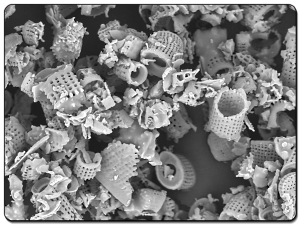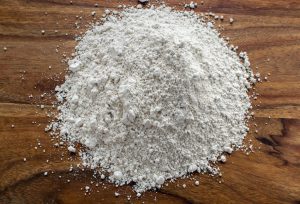
August 31st, is Diatomaceous earth (D.E.) Day! D.E. is a highly porous white or pink powder made from the sediment of fossilized algae found in bodies of water. The sediment are the skeletal remains of single-celled plants called diatoms. These microscopic algae have the unique capability of extracting silica from water to produce a honeycomb structural formation. When diatoms die, their skeletons settle to form a diatomite deposit. Because cells of these algae were high in a compound called silica, the dried sediment produced from these fossils are also very high in the mineral silica or silicon dioxide. D.E., functions as an organic, (Carbon-based), all-natural insecticide.
Insecticide properties
D.E. is considered a desiccant, and one of the most popular kinds of bed bug killers. It works by destroying a bed bug’s waxy, protective outer coating. Once this coating is destroyed, the bed bugs die. Unlike other kinds of bug spray, different strains of bed bugs can’t become resistant to desiccants because they produce a physical reaction with long-lasting effects. D.E. is recommended in bed bug control is a reliable alternative to chemical insecticides. Once a bed bug walks through D.E., the substance dries out its skeleton creating tiny cuts in the insect skin or outer shell, causing it to dehydrate, killing the insect slowly. Additionally, you must steam clean all linens and furniture, wash all fabrics, and vacuum your entire home before applying diatomaceous earth. After the powder is applied, wait 8-10 days before removing it to ensure effectiveness.

Not only is it used successful as an insecticide on cockroaches, bed bugs, stink bugs, ants, fleas, spiders, silverfish, dust, and spider mites, it’s also effective to get rid of flour mites and many other tiny pests. In the garden, its honeycomb structure works well as a water-holding substrate.
Processing
Diatomaceous Earth products for Soil amending (AxisDE) or Insect control (DeSect) which is not Flux-calcined and is purely a Kieseigur (Opaline) silica is a bio organism. IT IS NOT a carcinogen. The micron size of the Opaline ranges between 0.1-1 micron. DE is amorphous and has irregular or curved surfaces and is NOT considered a hazard to humans. “Amorphous diatomaceous earth has not been associated with any cancers in people.”
This is not to be confused with the Crystalline silica which IS a carcinogen found in pool filter products as well as perlite and vermiculite and is a QUARTZ. Crystalline silica is much smaller (.011 microns) than DE and is not derived from bio organisms.
Always remember to follow label directions on the bag for rate and safety considerations during any applications.
Resources
http://npic.orst.edu/factsheets/degen.html
 0
0
